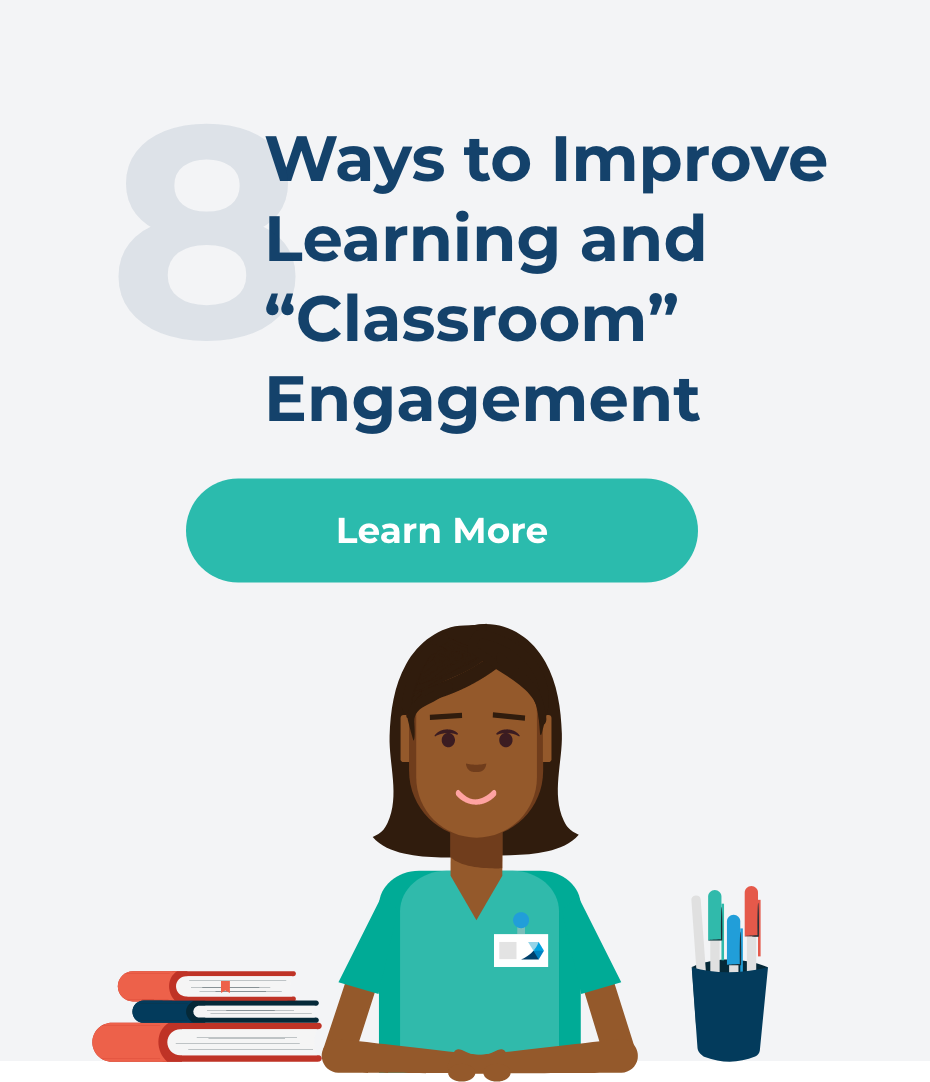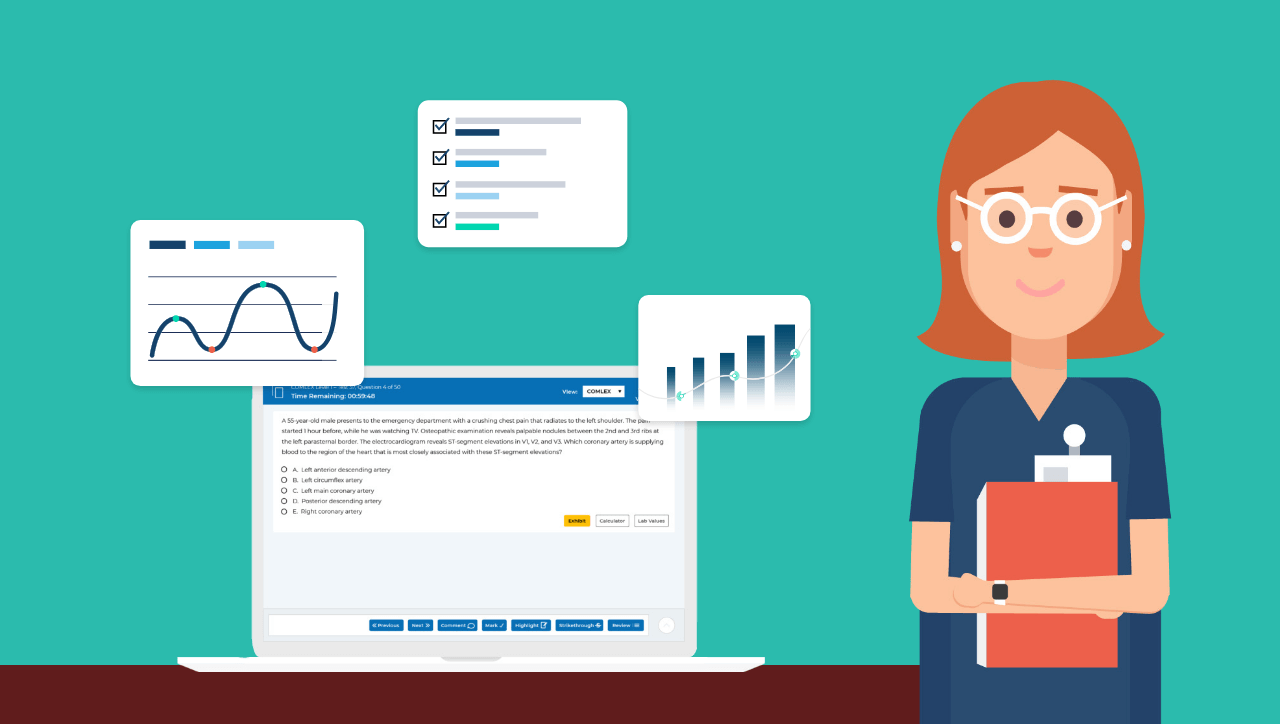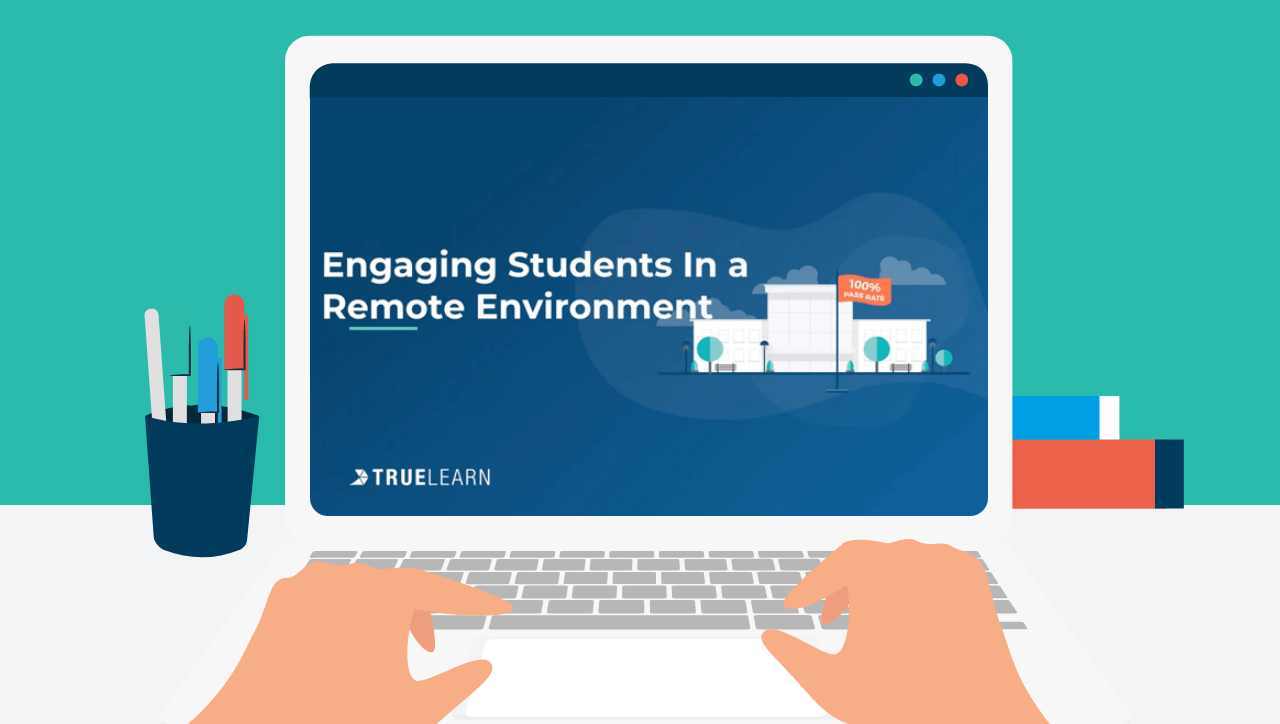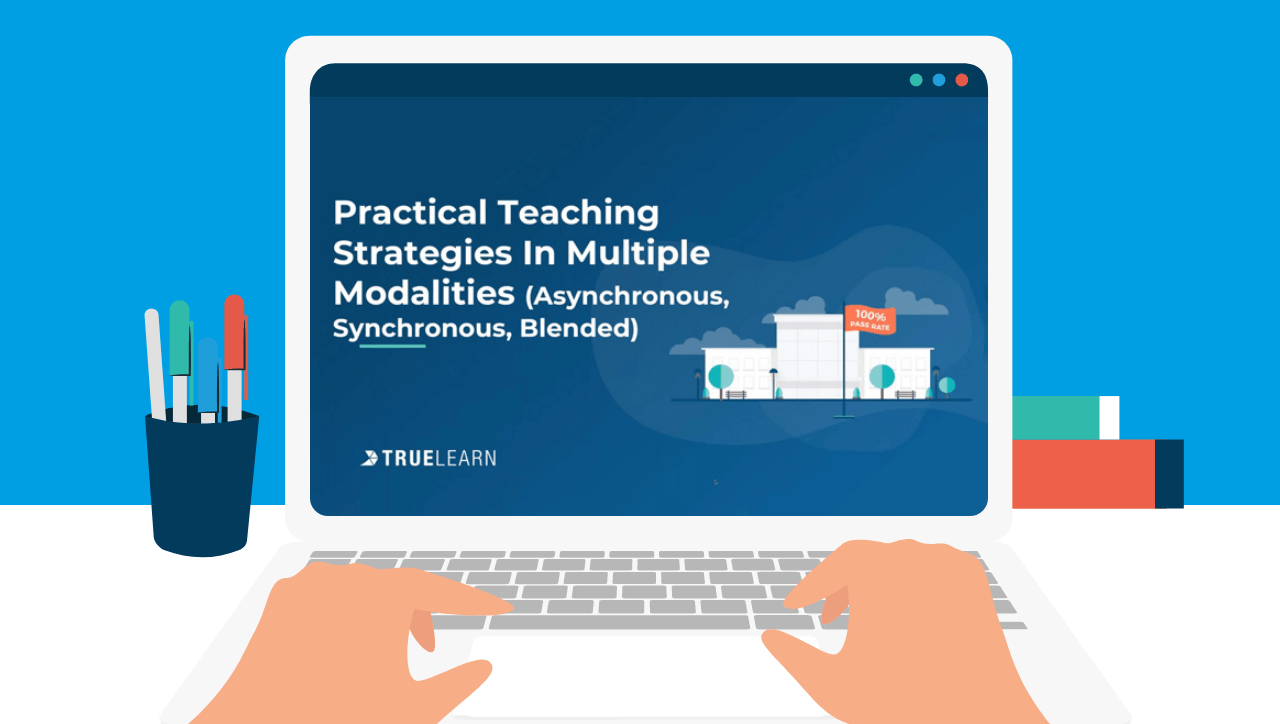Eight Ways to Improve Learning and “Classroom” Engagement

The 21st-century “classroom” is dynamic and versatile, encompassing learning in the clinical setting, required and elective rotations, mentorships, asynchronous assignments, virtual events and courses, peer study groups, independent study sessions, and more. As such, instructions must be given to learners ahead of “classroom” time so that they can be better prepared and absorb more during these educational hours. Educators thus need to emphasize effective delivery of instruction to help optimize learning outcomes and increase discipline, satisfaction, and self-regulation.
Here are eight ways educators can achieve that:
1. Present information in the most organized way
Our brains process and remember facts better when presented in an organized fashion, as this helps us assimilate the information much more quickly and efficiently. Thus, the organization of course content is important at both the individual class and curriculum levels. Creating a flow of content from foundational concepts to complex systems will help learners gradually grasp the big picture to make way for astute clinical application without being overwhelmed.
2. Leverage technology to facilitate effective instruction
More than 70% of Generation Z medical students1 have indicated a desire for more technology to be part of their education than they currently receive. Weaned on a diet of handheld technology, these “digital natives” are most comfortable using online tools, and that’s something educators can leverage to good effect. An example would be to assign supplemental reading materials and interactive lessons through innovative learning platforms that allow learners to move through the curriculum at their own pace. Best-in-class solutions often come with built-in algorithms that pick up individual learning patterns, and the data can guide educators in tailoring quizzes and other educational support to drive more effective and impactful learning.
3. Optimize learning with active learning strategies
A study2 found that learners engaged in active learning saw an increase in exam performance, raising average grades by half a letter. Traditional lectures and classroom time on their own are insufficient; additional time must be allocated for active learning activities. For example, breaking up a lecture with discussions and case studies allows educators to test their learners’ comprehension while helping them engage in higher-order thinking. This will encourage learners to think independently and not just receive information passively.
4. Connect lesson content to board exams and actual clinical scenarios
Adult learners have an innate desire to learn information directly relevant to their goals. Facts often have little meaning if they are disorganized and presented without context, as they force learners to rely on short-term memory strategies, and the information will be quickly forgotten after an exam. Mimicking board exams and using clinical scenarios to reinforce facts explicitly introduces how the learning applies to relevant and real-life settings. This actively engages the learner and helps develop critical thinking, problem-solving, and decision-making—soft skills essential for success on board exams and clinical practice.

5. Incorporate spaced and deliberate practice
Successful learning includes spaced and deliberate practice, which is important for moving from merely knowing something to being able to apply it. While it may be challenging to show the direct application of basic science information in the curriculum, educators can use practice questions and clinical scenarios to push learners to think beyond the facts and use that information to diagnose and treat patients. This aligns with educators’ ultimate goal: to create healthcare practitioners who can apply knowledge learned during training in new and novel ways in their future clinical practice.
6. Gamify learning to increase competition and provide outlets for creativity
Gamification of learning is one way to improve learner engagement. It increases competition and provides an avenue for creativity, choice, and receiving immediate feedback. It also allows learners to determine their goals and be responsible for their progress, all critical tenets of andragogy (adult learning theory). Through a “points” system, gamification changes the goal from earning a grade to “leveling up” or achieving a new badge, encouraging progress without hard pressure.
7. Use future success as motivation
Learners are motivated by thoughts of future success, which presents an opportunity to leverage the connection between what learners are learning and how it could affect their future success. The use of clinical cases and simulations anchors learning to the possibility of future success, significantly enhancing motivation.
8. Integrate active learning resources such as audio-visual tools
Look at an average learner’s search history and you will likely find a list of educational YouTube videos, podcasts, or commercial learning tools. Why do these external resources appeal to them? The answer is straightforward: they cater to learning preferences outside traditional lectures and assignments by utilizing humor, story, and other active learning strategies, increasing motivation and focus. Facts delivered through a presentation deck with plain text may look the same and can quickly disengage the mind. On the other hand, storytelling and audio-visual aid bring concepts to life. This piques curiosity, engages the mind, and significantly improves recall.
Learners in healthcare are highly-driven individuals who work hard to get to where they are today. If they are experiencing a lack of motivation, it’s important to look beneath the surface and find out if there are bigger issues that need to be addressed. At the same time, it’s helpful to analyze and identify any instructional issues around the organization and effectiveness of lectures that may affect learners’ ability to follow the pace or connect learning materials to the bigger picture.
Find out how to optimize learning and exam outcomes for your learners. Speak to a representative or schedule a demo today.
References
1 Plochocki JH. Several ways generation Z may shape the medical school landscape. J Med Educ Curric Dev. 2019;6:2382120519884325. doi:10.1177/2382120519884325
2 Freeman S, Eddy SL, McDonough M, et al. Active learning increases student performance in science, engineering, and mathematics. Proc Natl Acad Sci U S A. 2014;111(23):8410-8415. doi:10.1073/pnas.1319030111



